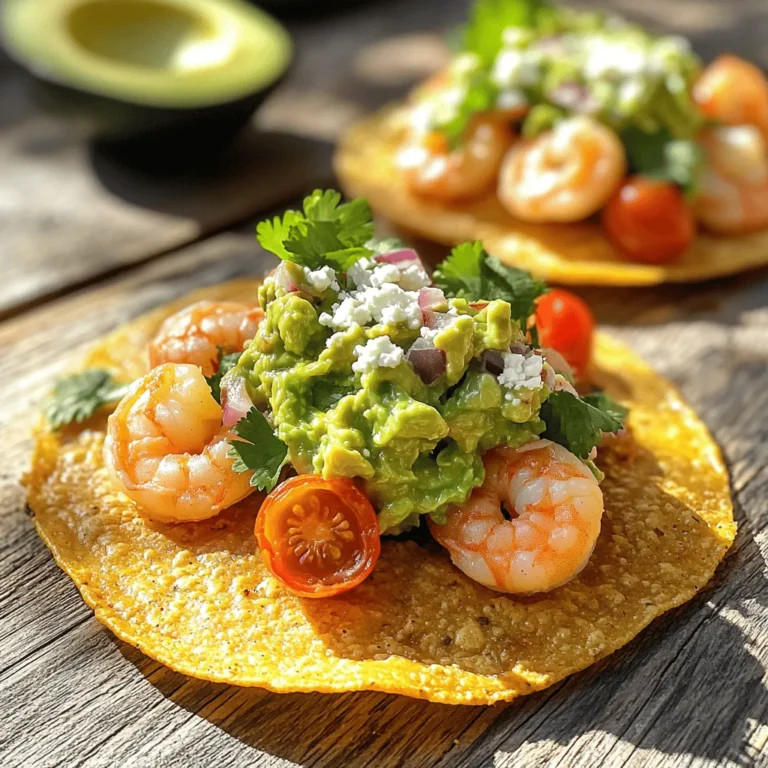Easy Bread and Butter Pickles Crunchy and Homemade
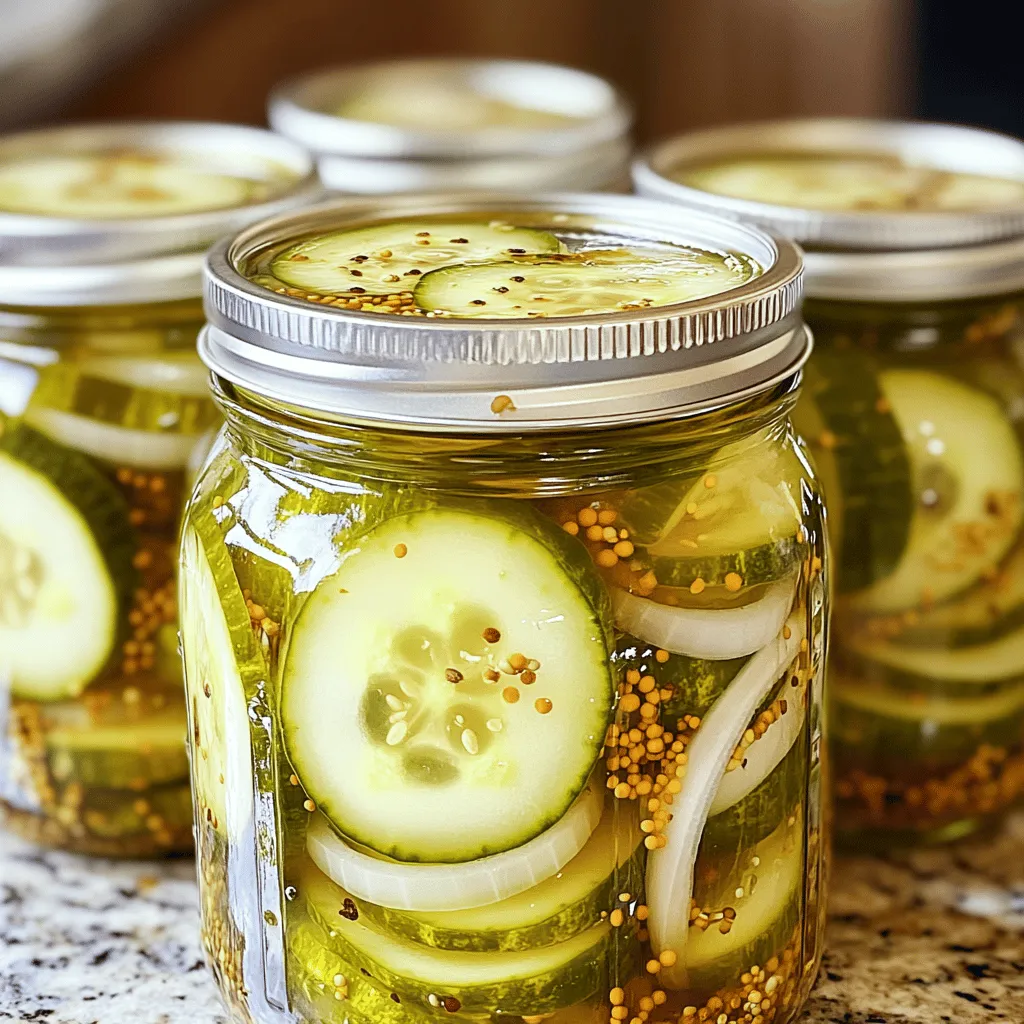
Do you crave crunchy, homemade pickles with a sweet and tangy kick? Look no further! In this article, I’ll show you how to make easy Bread and Butter Pickles that are perfect for snacking or adding to meals. With simple ingredients and step-by-step instructions, you’ll impress family and friends with your pickling skills. Get ready to bring flavor to your table—let’s dive in!
Ingredients
Essential Ingredients for Easy Bread and Butter Pickles
To make the best bread and butter pickles, you’ll need some basic ingredients. Here’s what you should gather:
– 4 cups cucumbers, sliced into thin rounds
– 1 medium onion, thinly sliced
– 1 cup granulated sugar
– 1 cup apple cider vinegar
– 1 tablespoon mustard seeds
– 1 tablespoon celery seeds
– ½ teaspoon ground turmeric
– ½ teaspoon kosher salt
– ¼ teaspoon freshly ground black pepper
– 1 clove garlic, thinly sliced (optional)
These ingredients come together to create a sweet and tangy flavor that really shines.
Optional Ingredients for Customization
You can customize your pickles with a few optional ingredients. Here are some ideas:
– Fresh dill for a herbal note
– Red pepper flakes for heat
– Carrot slices for added crunch
– Bell pepper strips for color
Feel free to mix and match based on your taste. The fun part of making pickles is putting your spin on it!
Tips for Selecting Fresh Cucumbers
Choosing the right cucumbers is key to crunchy pickles. Look for these signs:
– Firmness: Pick cucumbers that feel firm and solid.
– Skin: Choose cucumbers with smooth, dark green skin.
– Size: Smaller cucumbers are often crunchier. Aim for 4 to 6 inches long.
Fresh cucumbers make the biggest difference in taste and texture. Trust me, you’ll want the best for your homemade pickles.
Step-by-Step Instructions
Preparing the Cucumbers and Onions
Start with fresh cucumbers. I prefer the small, firm ones for a great crunch. Wash them well and slice them into thin rounds. Aim for uniform thickness to ensure even pickling. Next, take a medium onion and slice it thinly. Combine the cucumbers and onions in a large mixing bowl. Gently toss them together. This step helps mix the flavors.
Making the Brine Mixture
Now, let’s make the brine. In a medium saucepan, add sugar, apple cider vinegar, mustard seeds, celery seeds, ground turmeric, kosher salt, and black pepper. If you love garlic, add a clove, thinly sliced. Place the saucepan on medium heat. Stir the mixture until the sugar dissolves completely. Once dissolved, allow it to boil gently. This will create a tasty brine that will soak into the veggies.
Combining and Storing the Pickles
Carefully pour the hot brine over the cucumbers and onions. Make sure every piece is covered. This helps them absorb the flavor. Let the mixture sit at room temperature for about 30 minutes. Stir it occasionally to cool it evenly. Once cooled, transfer the cucumbers and onions into clean, sterilized jars. Fill them up with the brine. Seal the jars tightly with their lids.
Now, refrigerate the pickles for at least 24 hours. This waiting time allows the flavors to blend well. For the best taste, enjoy them after a few days. The longer they chill, the better they get!
Tips & Tricks
How to Ensure Crispiness in Pickles
To get crunchy pickles, start with fresh cucumbers. Look for firm ones with no soft spots. Slice them thinly, about a quarter-inch thick. The thinner the slice, the better they soak up flavor. You can soak the slices in ice water for about two hours before pickling. This can help keep them crisp. After soaking, drain them well before adding to your brine.
Best Practices for Safety and Sterilization
Safety is key when making pickles. Always use clean jars and lids. Wash them in hot, soapy water, then rinse well. For extra safety, you can sterilize jars by placing them in boiling water for ten minutes. Let them cool down before using. When filling jars, leave a little space at the top. This helps create a seal. Always store your pickles in the fridge and eat them within a few weeks.
Flavor Enhancement Tips and Tricks
Want to boost the taste of your pickles? Add spices! Mustard seeds and celery seeds are great choices. You can also try adding a pinch of red pepper flakes for heat. Fresh herbs like dill or thyme can add a nice touch too. For a twist, try adding sliced jalapeños or ginger to the brine. Just remember, the longer the pickles sit, the more intense the flavor!
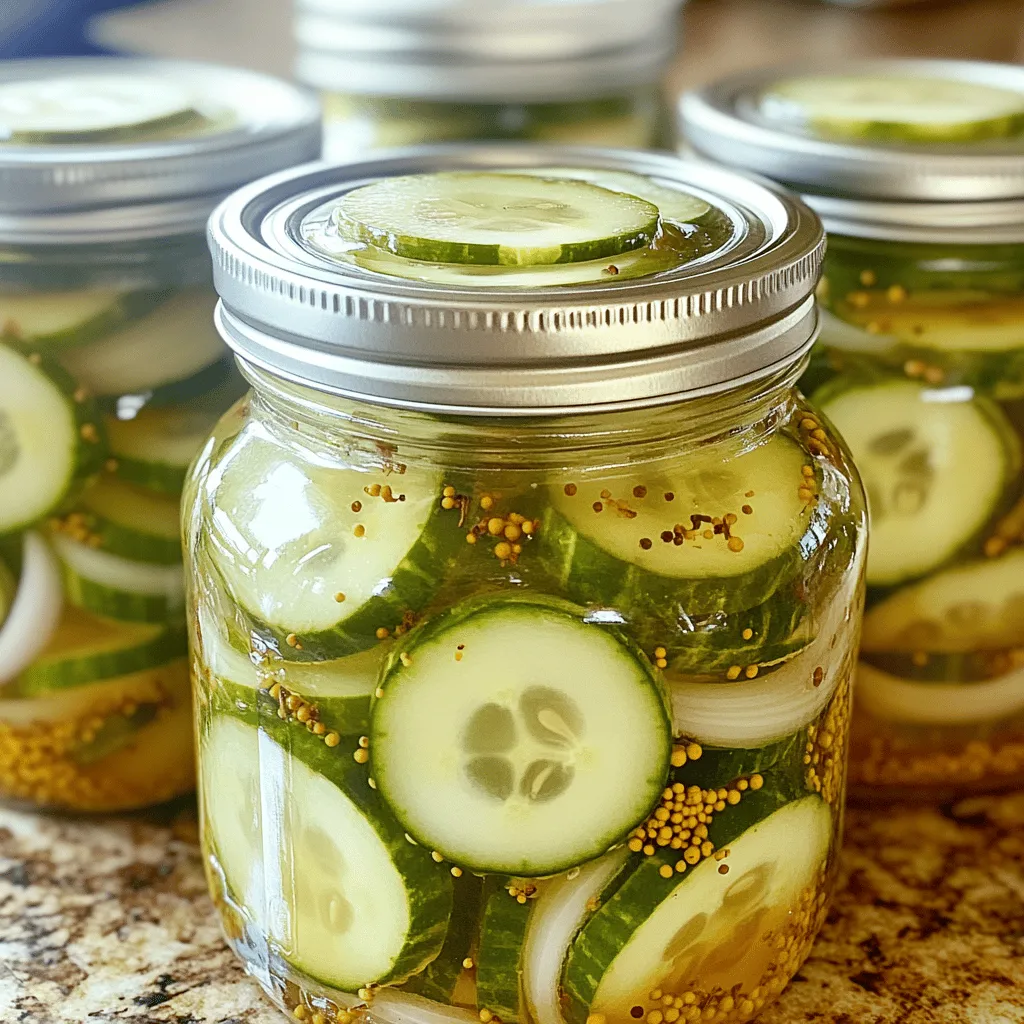
Variations
Spicy Bread and Butter Pickles
To make your pickles spicy, add some heat. You can include sliced jalapeños or crushed red pepper flakes. Start with one tablespoon of flakes for a mild kick. Adjust to your taste. The spice will blend well with the sweetness, giving you a fantastic flavor.
Sweet and Tangy Alternative
If you want a different taste, use honey instead of sugar. Honey adds a nice depth to the brine. You can also add a splash of lemon juice for extra tang. This twist creates a unique balance that many love.
Creative Add-ins and Flavor Combinations
Don’t be afraid to experiment with flavors. Try adding fresh dill for a herby note. You can also use sliced ginger for a zesty touch. Whole peppercorns can add a nice crunch. Each add-in brings a new layer to the classic taste of bread and butter pickles. Explore these ideas to find your favorite mix.
Storage Info
Best Refrigeration Practices
Store your bread and butter pickles in the fridge. Use clean, sterilized jars to keep them fresh. Make sure the cucumbers are fully submerged in the brine. This helps them stay crunchy and flavorful. Tighten the jar lids well to keep air out. Always label your jars with the date. This way, you know when you made them.
Shelf Life of Homemade Pickles
Homemade bread and butter pickles last about two months in the fridge. After this time, their flavor and crunch may fade. For the best taste, eat them within this time. If you want to keep them longer, consider canning them. However, this requires special equipment and methods to ensure safety.
How to Tell if Pickles Have Spoiled
Check your pickles for signs of spoilage. If you see any mold, toss them out. A foul odor is also a sign they are bad. The brine should smell tangy and fresh. If the pickles feel mushy, they have spoiled too. Always trust your senses. When in doubt, it’s safer to throw them away. Remember, you want your pickles to be crunchy and tasty!
FAQs
How long do I need to wait before eating the pickles?
You should wait at least 24 hours before eating your pickles. This time allows the cucumbers to soak up the brine. If you wait longer, the flavors will grow even better. I like to let them sit for three days. The taste will be richer and more balanced.
Can I can these pickles for long-term storage?
Yes, you can can these pickles for long-term storage. Use proper canning jars and lids. Make sure to process them in a boiling water bath for 10-15 minutes. This will help seal the jars and keep your pickles safe. Just remember, once you open them, store them in the fridge.
What can I use these pickles for besides eating straight?
These pickles are great in many dishes! You can add them to sandwiches and burgers. They also work well in salads or on charcuterie boards. Try mixing them into potato salad for a nice crunch. You can even chop them up for a tangy relish. The options are endless!
Other common user questions related to Easy Bread and Butter Pickles
– Can I use other vegetables for pickling? Yes, you can experiment with onions, carrots, or even peppers.
– What if I don’t have apple cider vinegar? You can use white vinegar, but it may change the taste slightly.
– Can I reduce the sugar? Yes, but the pickles may taste less sweet and tangy.
– How do I know if my pickles are crunchy? They should have a firm bite and not feel mushy.
In this post, we explored making easy bread and butter pickles. We covered essential and optional ingredients, ensuring you find the best cucumbers. You learned step-by-step instructions for preparing and brining your pickles, plus tips for crispiness and safe storage. Don’t forget the fun variations to try!
Now, you have all you need to craft delicious pickles. Enjoy your tasty creations and share them with friends!
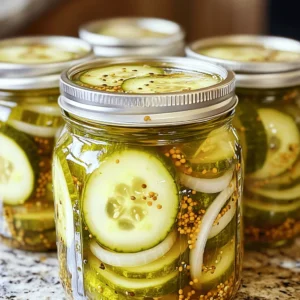

![To make this Southern fried okra, start with 1 pound of fresh okra. Look for bright green pods that feel firm. Avoid any that show signs of browning or softness. Slice the okra into 1/2 inch rounds. This size helps them cook evenly and keeps their crunch. Next, prepare the coating. You will need: - 1 cup buttermilk - 1 cup cornmeal - 1/2 cup all-purpose flour - 1 teaspoon garlic powder - 1 teaspoon onion powder - 1 teaspoon smoked paprika - 1/2 teaspoon cayenne pepper (you can adjust this for spice) - Salt and pepper to taste Mix the cornmeal, flour, and spices in a bowl. This blend adds flavor and crunch. The buttermilk will help the coating stick well to the okra. For frying, use vegetable or canola oil. You need enough to fill your skillet by about 1 inch. This depth helps fry the okra evenly. Heat the oil to 350°F (175°C). A thermometer is handy for this step. Getting the oil hot enough is key for that crispy texture. Check the Full Recipe for detailed steps on cooking. Enjoy making this tasty dish! To start, you need fresh okra. Rinse it well under cold water. This cleans any dirt off the pods. Next, slice the okra into 1/2 inch rounds. Make sure each piece is uniform in size. This helps them cook evenly. Once sliced, set the okra aside on a clean plate. Now, grab a mixing bowl and pour in 1 cup of buttermilk. Add the sliced okra to the bowl. Make sure each piece is well-coated with buttermilk. Soak the okra for about 15 minutes. This step adds moisture and flavor. In another bowl, mix the dry ingredients. Combine 1 cup of cornmeal and 1/2 cup of all-purpose flour. Add 1 teaspoon each of garlic powder, onion powder, and smoked paprika. For extra heat, mix in 1/2 teaspoon of cayenne pepper. Lastly, add salt and pepper to taste. Whisk everything together well. This will create a tasty coating for the okra. For the complete recipe, check out the [Full Recipe]. Start by heating the oil in a skillet. Pour about an inch of vegetable or canola oil into a large skillet. Set the heat to medium-high. You want the oil to reach 350°F (175°C). Use a cooking thermometer for accuracy. This temperature is key for a crispy texture. After soaking the okra in buttermilk, lift it out carefully. Allow the excess buttermilk to drip off. Now, place each piece in the cornmeal mixture. Coat them well, but shake off any extra coating. This step helps avoid clumps. Once the oil is hot, add the coated okra in small batches. Avoid overcrowding the pan to keep the oil hot. Fry the okra for 3-4 minutes. Turn them occasionally to get an even golden color. When they look crispy and brown, use a slotted spoon to transfer them to a plate lined with paper towels. This removes any excess oil for a light bite. For the full experience, serve your Southern Fried Okra warm with your favorite dipping sauce. Enjoy the crunch and flavor that comes from this classic dish! {{image_4}} To make your Southern Fried Okra crispy, follow these steps: - Use fresh okra. Freshness matters for flavor and crunch. - Soak in buttermilk. This adds moisture and helps the coating stick well. - Mix dry ingredients well. A good mix of cornmeal and flour creates a great crust. - Heat oil properly. The oil should be around 350°F (175°C). Use a thermometer for accuracy. - Don't overcrowd the pan. Fry in small batches to keep the oil hot. Dipping sauces can enhance your okra’s flavor. Here are my favorites: - Creamy ranch dressing. This classic pairs well with the crunch. - Spicy remoulade. For a kick, this sauce adds a nice zest. - Honey mustard sauce. A sweet twist that complements the savory fried okra. Avoid these errors for the best okra: - Skipping the buttermilk soak. This step is key for flavor and texture. - Using cold oil. Cold oil makes the okra soggy, not crispy. - Not draining excess oil. Place fried okra on paper towels to remove oil. - Frying too many pieces at once. This lowers the oil temperature and makes the coating soggy. With these tips, your Southern Fried Okra will shine! For the full recipe, check the Southern Fried Okra Delight section above. To add some heat, use cayenne pepper. You can adjust the amount to your taste. For more spice, mix in some finely chopped jalapeños. Add them to the buttermilk soak for a spicy kick. You can also sprinkle hot sauce in the buttermilk. This brings out the zest in the dish. Spicy Southern fried okra pairs well with creamy dips. Want a lighter option? Try baking instead of frying. Coat the okra in the same buttermilk and cornmeal mix. Then, place them on a baking sheet lined with parchment. Spray a little oil on top for crispiness. Bake at 425°F (220°C) for about 20-25 minutes. Turn them halfway through to ensure even cooking. You’ll still enjoy the great flavor with less oil. Get creative with your okra! Try adding cheese to the coating. Grated Parmesan or cheddar blends well with cornmeal. You can also add herbs like thyme or dill for a fresh taste. For a sweet twist, sprinkle some brown sugar in the coating mix. This gives a nice contrast to the okra's natural flavor. Each version brings new excitement to your meal. Don’t forget to try these variations when following the Full Recipe! To keep your fried okra fresh, let it cool first. Place it in an airtight container. You can store it in the fridge for up to three days. For longer storage, freeze it in a freezer-safe bag. Just remember to remove as much air as you can. This way, your okra stays tasty and avoids freezer burn. When you are ready to enjoy your leftovers, you can reheat them easily. The best method is to use an oven. Preheat your oven to 350°F (175°C). Spread the fried okra on a baking sheet. Bake for about 10-15 minutes until hot and crispy again. You can also use an air fryer for a quick reheating. Set it to 350°F (175°C) for about 5-7 minutes. Serve your Southern Fried Okra warm for the best taste. It pairs well with several dips. Try ranch dressing for a creamy option or a spicy remoulade for some heat. You can also serve it as a side dish with fried chicken or barbecue. For a fun twist, add it to salads or tacos for extra crunch. Enjoy your crispy and flavorful delight! Yes, you can use frozen okra. Just thaw it first. Pat it dry with a kitchen towel. This helps remove excess moisture. Too much water can make the coating soggy. For the best flavor, fresh okra is still the top choice. Frozen okra works in a pinch, though! To keep your okra crispy, follow these tips: - Soak the okra in buttermilk. This adds moisture and flavor. - Make sure to coat each piece well in the cornmeal mixture. - Do not overcrowd the pan when frying. This keeps the oil hot. - Drain the fried okra on paper towels. This removes excess oil. These steps help you get that crunchy texture every time! Southern Fried Okra has roots in the American South. It came from African culinary traditions. Okra traveled with enslaved people to the U.S. They used it in many dishes. Over time, it became a staple in Southern cooking. Today, it is loved for its unique flavor and crispy texture. Enjoying Southern Fried Okra connects us to this rich history. We explored how to make Southern Fried Okra from fresh ingredients. We covered the best ways to prepare okra, soak it properly, and fry it for crispiness. You learned tips for tasty dipping sauces and ways to avoid common mistakes. Variations let you spice things up or make a healthier version. Lastly, we discussed how to store leftovers and serve them well. Enjoy this fun treat as a snack or side dish! Your fried okra will impress everyone!](https://fastmealmate.com/wp-content/uploads/2025/06/ecd84e34-27de-41dd-a177-4579a9f233b7-768x768.webp)
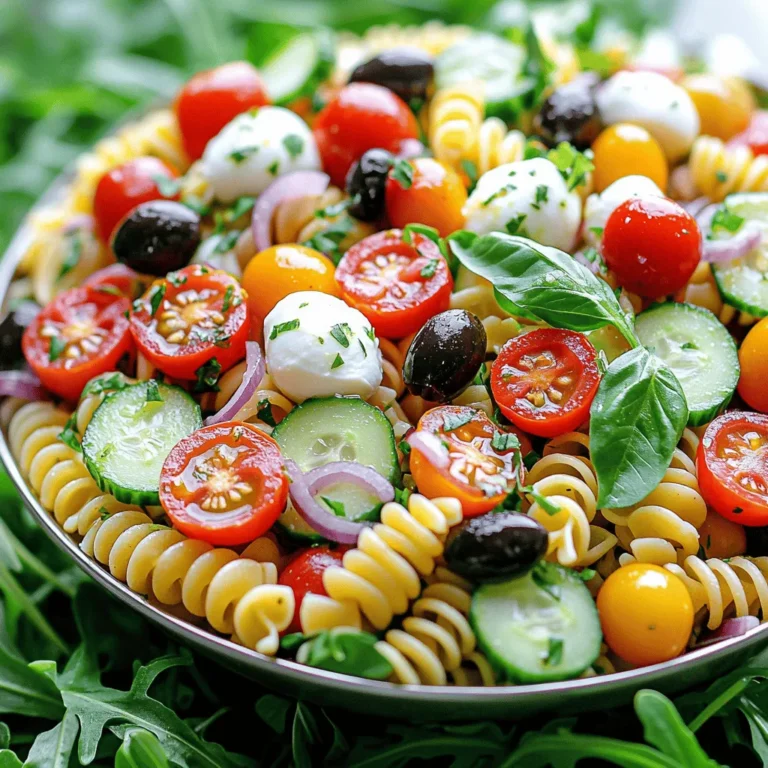
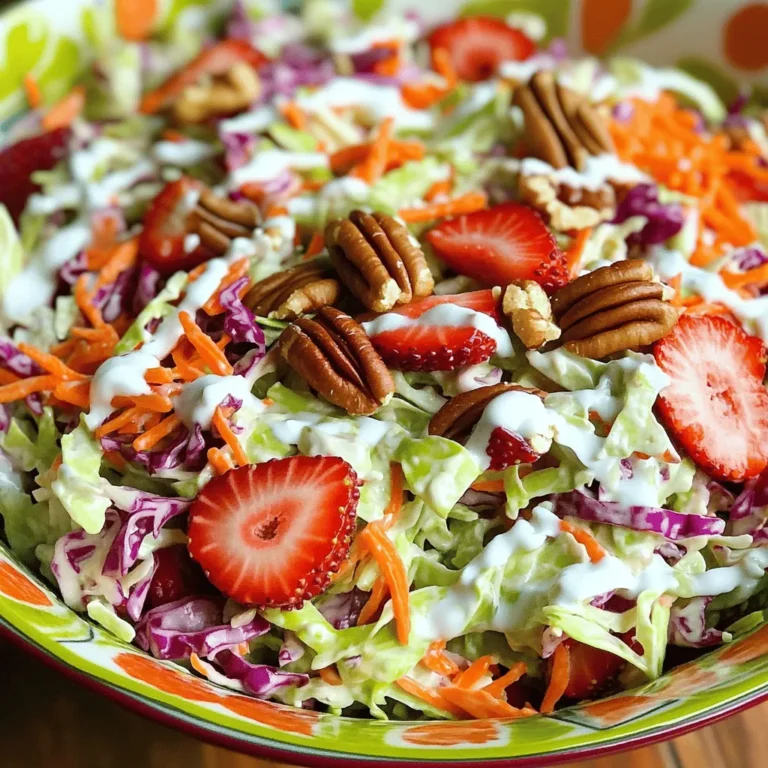
![- 2 medium yellow squashes - 1 small onion - 1 cup whole wheat breadcrumbs - 2 large eggs - 1/2 cup freshly grated Parmesan cheese - 1/4 cup fresh parsley - 1 teaspoon garlic powder - 1 teaspoon paprika - Salt and pepper to taste - Cooking spray or olive oil Using fresh ingredients makes a big difference in flavor. The yellow squash adds a nice sweetness. The onion gives it a sharp bite. Whole wheat breadcrumbs help bind the fritters while adding fiber. Eggs are key for holding everything together while baking. Herbs and spices really boost the taste. Fresh parsley adds a pop of color and flavor. Garlic powder gives a nice depth, and paprika adds warmth. Don't forget to season with salt and pepper to make flavors shine. For greasing, using cooking spray or olive oil helps the fritters brown nicely. You want a golden crust that contrasts with the soft inside. For a full recipe, check out the [Full Recipe]. - Preheat the oven to 400°F (200°C). - Prepare and grease the baking sheet. Use cooking spray or a drizzle of olive oil. - Grate the yellow squash. - Chop the onion finely and remove excess moisture. Wrap it in a towel, twist, and squeeze gently. - Mix all the ingredients in a bowl. - Form fritters and place them on the baking sheet. Aim for patties about 2-3 inches wide. - Spray or drizzle the fritters with olive oil. - Bake for 20-25 minutes, flipping halfway. This ensures they cook evenly and get crispy. Follow these steps to make your fritters tasty and enjoyable. You can find the Full Recipe for more details. To get your fritters nice and crispy, start by removing excess moisture from the squash. Moisture makes them soggy. After grating the squash, wrap it in a clean kitchen towel. Twist and squeeze the towel to remove as much liquid as you can. This step is key to crispiness. Next, use cooking spray wisely. Lightly spray the tops of the fritters before baking. This helps them brown evenly and adds a nice crunch. You can also drizzle olive oil for a richer flavor. Garnish your fritters with fresh parsley for a pop of color. It adds a fresh taste that pairs well with the fritters. You can also serve them with dips. Creamy yogurt or tzatziki works great. These dips add another layer of flavor and make your dish more fun. Oven types may vary, so cooking times can change. If you use a convection oven, check your fritters a few minutes early. They may cook faster. For standard ovens, stick to 20-25 minutes. To ensure even baking, flip the fritters halfway through cooking. This helps both sides become golden and crispy. Enjoy your perfectly baked fritters from the [Full Recipe]. {{image_4}} You can change the recipe by using different vegetables. Zucchini works well, too. It has a similar texture and taste. Carrots can add a sweet touch. Sweet potatoes bring a nice flavor and color. For cheese, you can swap the Parmesan for feta or cheddar. Feta gives a tangy twist, while cheddar offers a rich taste. This simple change can make your fritters unique. To boost the flavor, you can add spices. Try cumin for a warm taste. Chili flakes can bring some heat. Just a pinch can change the whole dish. Adding fresh herbs can also enhance the flavor. Basil gives a sweet note, while thyme adds earthiness. Mixing in any of these can make your fritters even better. If you need a gluten-free option, use gluten-free breadcrumbs. These work just as well in the recipe. You can also use ground oats or almond flour. Both are great substitutes. For binding, you can add more eggs or use mashed beans. Beans add protein and help hold the fritters together. These easy swaps keep the dish tasty and friendly for all diets. For the full recipe, check out the main article. To keep your fritters fresh, refrigerate them quickly. Place them in a single layer on a plate. Cover them with plastic wrap or foil. If you have many fritters, stack them with parchment paper in between layers. The best containers for storage are airtight ones. Use glass or plastic containers with tight lids. This helps keep moisture out and preserves flavor. For the best texture, reheat fritters in the oven. Set it to 350°F (175°C). Place fritters on a baking sheet for about 10 minutes. This method keeps them crispy. If you want to freeze fritters, let them cool first. Place them in a single layer on a baking sheet and freeze for about an hour. Once frozen, transfer them to a freezer bag. They can last up to three months in the freezer. Baked fritters last about 3 to 4 days in the fridge. Always check for signs of spoilage. If they smell sour or look slimy, throw them away. Fresh fritters should smell like squash and herbs. Enjoy your delicious oven-baked yellow squash fritters! For the full recipe, check out the section above. Yes, you can prepare these fritters ahead of time. To do this, follow these steps: - Prepare the Mixture: Make the fritter mix as per the Full Recipe. - Storage: Place the mixture in an airtight container. You can keep it in the fridge for up to two days. - Form the Fritters: When ready to cook, form the fritters and bake them. This method saves time on busy days and keeps the flavor fresh. Yes, yellow squash fritters offer great health benefits. Here are some reasons they are good for you: - Low in Calories: Yellow squash is low in calories, making it a great choice for light meals. - High in Fiber: It helps with digestion and keeps you full longer. - Rich in Vitamins: Yellow squash is packed with vitamins A and C, which support your immune system. Incorporating these fritters into your meals can add nutrition without sacrificing taste. If you want a healthier fritter, try these substitutes for breadcrumbs: - Oats: Use ground oats for a gluten-free option. - Chickpea Flour: This adds protein and a nutty flavor. - Crushed Nuts: Almonds or walnuts can give a crunchy texture. These alternatives can change the taste and texture, making your fritters unique. Absolutely! Baking in an air fryer is simple and fast. Here’s how to adjust the recipe: - Temperature: Set your air fryer to 375°F (190°C). - Cooking Time: Cook for about 12-15 minutes, flipping halfway through. Using an air fryer makes the fritters extra crispy while using less oil. Oven-baked yellow squash fritters are easy and fun to make. We covered key ingredients like squash, onion, and Parmesan. You learned how to prep, mix, bake, and even store leftovers. Remember to remove moisture for crispiness and try different spices for added flavor. These fritters are not just tasty; they're a healthy choice too. With simple steps, you can impress anyone. Enjoy experimenting with variations that suit your taste. Now, get cooking and savor your delicious fritters!](https://fastmealmate.com/wp-content/uploads/2025/06/228bb01e-104c-4728-9be6-f22ec78a35c6-768x768.webp)
